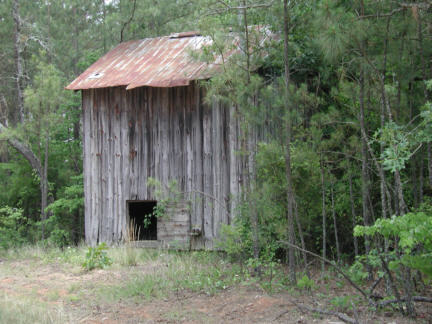
Hi Myrtle. I read your article about "Disappearing Barns", on the Harnett County site,
and in response to your request for stories about them, I submit the following:
When I was young (1930-1950), we used the barns for storage of corn, peanuts, hay and beans, onions,
and "canned" stuff. It required an incredible amount of the commodities I listed above, to last a
family of 8 to 12, all winter. Rats, beetles, bugs, worms, and every other kind of pest imaginable
infested everyones barns and ate or destroyed at least as much as was consumed by the family. When
my Mom cooked cornbread or biscuits, her and my two older sisters spent an hour beforehand, poring
over and through the meal and flower, picking out all the bugs and rat droppings. Of course, there
was no way to get all the rat droppings out, so it helped to consider that left in the pan, as
"meat", or something else good. There was no way possible to get the stench out, caused by rat
urine, and I can still imagine that awful smell. Most barns back then, had wooden shingle roofs and
leaked like sieves, spoiling and rotting more commodities. Consequently, due to all the destruction
and waste, everyone had to store 3 times as much stuff as they needed, in order to survive the losses
and still have enough to eat and feed to livestock. The barns with what looks like a smaller story over
a larger level, were used to hang tobacco leaves to dry, and still have enough storage room on the first
level, for the other commodities.
One major use for barns is one no one knows about, unless they actually grew up with a barn; That use
was to use the barns on rainy days for building "forts" from bales of hay, throwing corncobs at each
other, and just spending the whole day there, playing. We sat around and told ghost stories in the barn,
and ate peanuts. It was a place of solitude, even when it rained.
I have not lived on a place with a barn in 50 years, and I find myself often thinking about building a
barn on my place. I miss the old barns, even to this day. It was a very large and important part of
living on a farm, and an even larger and more important part of the social and personal development of
young children, back then. JD Bedsole
Back to THE DISAPPEARING BARNS OF HARNETT COUNTY
